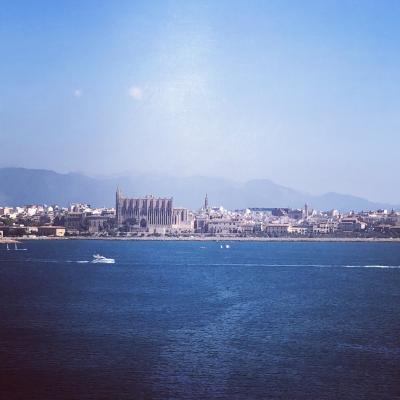What role did Guillem Sagrera play in shaping the architectural heritage of Mallorca?
Similar Topics
guillem sagrera
mallorca architecture
gothic architecture
catalan gothic
lonja de palma
medieval mallorca
architectural heritage
palma sea traders
Guillem Sagrera was a pivotal figure in the architectural heritage of Mallorca during the early 15th century, renowned for his contributions to Gothic architecture on the island. Born in Mallorca, Sagrera became one of the most influential architects and sculptors of his time, known particularly for his ability to blend structural functionality with artistic elegance. His work reflects the sophistication and stylistic elements of the Catalan Gothic tradition, lending Mallorca a distinctive historical character that continues to attract scholars and visitors alike.
One of his most celebrated projects is the Lonja de Palma, or the Sea Traders' Hall, a masterpiece of civil architecture commissioned by the city of Palma for commercial activities. This building is considered a symbol of Mallorca’s medieval mercantile prosperity and is acclaimed for its richly decorated columns and intricate stonework, which exhibit both structural innovation and aesthetic finesse. Sagrera's deft handling of light and space within the Lonja not only served practical purposes but also created a visually impressive environment that communicated the wealth and power of Palma’s trading class.
Beyond the Lonja, Sagrera's architectural vision influenced other important religious and civic buildings on the island, contributing to Mallorca’s unique architectural landscape. His work helped establish an architectural dialogue between local traditions and broader Mediterranean Gothic trends, which enriched the cultural and historical fabric of the island. By artfully merging ornamental detail with sturdy construction, Guillem Sagrera left a lasting legacy that highlights Mallorca’s medieval artistic achievements and continues to inspire admiration for its historic cityscape.
One of his most celebrated projects is the Lonja de Palma, or the Sea Traders' Hall, a masterpiece of civil architecture commissioned by the city of Palma for commercial activities. This building is considered a symbol of Mallorca’s medieval mercantile prosperity and is acclaimed for its richly decorated columns and intricate stonework, which exhibit both structural innovation and aesthetic finesse. Sagrera's deft handling of light and space within the Lonja not only served practical purposes but also created a visually impressive environment that communicated the wealth and power of Palma’s trading class.
Beyond the Lonja, Sagrera's architectural vision influenced other important religious and civic buildings on the island, contributing to Mallorca’s unique architectural landscape. His work helped establish an architectural dialogue between local traditions and broader Mediterranean Gothic trends, which enriched the cultural and historical fabric of the island. By artfully merging ornamental detail with sturdy construction, Guillem Sagrera left a lasting legacy that highlights Mallorca’s medieval artistic achievements and continues to inspire admiration for its historic cityscape.
🧩 Related Questions
Related Question
How do seasonal ingredients affect the menu offerings in Mallorcan restaurants?
Related Question
How do Mallorcan almond products reflect the island’s cultural heritage and culinary traditions?
Related Question
Can the wetland near Es Trenc beach help mitigate the effects of climate change, and if so, how?
